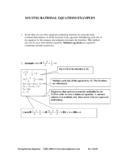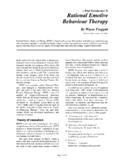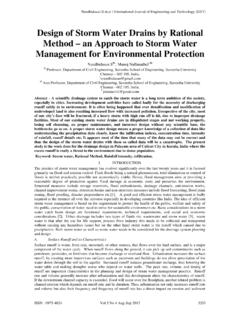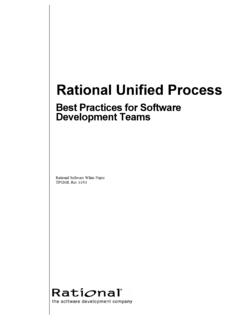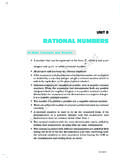Transcription of Rational Emotive Education - REBT Network: Albert Ellis
1 Dr. William J. KnausRationalEmotiveEducationHelpAndManu al_unregistered_evaluation_copyRational Emotive EducationIWilliam J. KnausTable of ContentsPart IPreface & 11 Preface .. 52 Introduction Part IIThe Nature of Rational - Emotive Education (REE) 61 Background .. 72 Content of REE Program .. 83 Technique .. 8 REE is Compatible with Current Educational Systems .. 9 REE Is an Effective System Part IIIO rientation to the Principles ofRational- Emotive Therapy People's 171 The task of the Rational - Emotive Therapist or Counselor .. 182 RET: An Educational System .. 183 The ABC Theory of Emotions .. 19 The Two Faces of B .. 20D - Disputing Irrational Beliefs .. 20E - The Cognitive-Affective-Behavioral Effect .. 214 Perspective and Change .. 225 Biological and Environmental Influences on Behavior Part IVFeelings: The Basics in 241 Background for the Teacher.
2 252 Student Activity 1: Feelings .. 263 Student Activity 2: The Expression Guessing Game .. 284 Student Activity 3: Where Feelings Come from .. 30 Homework Assignment .. 305 Student Activity 4: The Happening-Thought-Feeling Reaction Diagram (HTFR) .. 32 Homework Assignment Part VThe Art of Challenging Irrational Beliefsthrough Self-questioning and 331 Background for the Teacher .. 342 Student Activity I: The First Step in Challenging .. 363 Student Activity 2: The Emotional Experience Scales .. 384 Student Activity 3: "Mr. Head" (Brody, 1973) IIContentsREBT 395 Student Activity 4: Using Challenging Techniques .. 41 Homework Assignment Part VIChallenging Feelings of 421 Background for the Teacher .. 422 Student Activity 1: Simple and Complex .. 44 Homework Assignment.
3 443 Student Activity 2: The Self-Concept Pin-Wheel (for children under 10) .. 484 Student Activity 2: The Self-Concept Circle (for children over 10) .. 495 Student Activity 3: Upset A Game to Demonstrate Irrationality .. 516 Student Activity 4: Challenge A Game to Demonstrate Rationality .. 53 Supplementary Activities Part VIIL earning, Mistake-making, and 541 Background for the Teacher .. 552 Student Activity 1: How People Learn .. 57 Homework Assignment .. 583 Student Activity 2: Facts and Opinions .. 59 Supplementary Activities .. 59 Review and Preview .. 60 Homework Assignment .. 614 Student Activity 3: Why People Have Different Opinions .. 655 Student Activity 4: Why People Make Unsound Assumptions .. 68 Reinforcement: .. 68 The Huddle Game, a game of assumptive 69 Rumor 70 Homework Assignment.
4 706 Student Activity 5: The Imperfect Person in the Imperfect World .. 73 Homework Assignment .. 747 Student Activity 6: Why People Make Mistakes .. 76 Supplementary Activity Part VIIID emanding, Catastrophizing, and 771 Background for the Teacher .. 782 Student Activity 1: Demands and Desires .. 803 Student Activity 2: The Many Faces of "Troubles" .. 844 Student Activity 3: Touchy Joe .. 85 Homework Assignment .. 855 Student Activity 4: Catastrophizing or "Awfulizing" .. 88 Supplementary Activity .. 886 Student Activity 5: Can You be a Perfect Challenger? .. 89 Homework Assignment Part IXSpecial 901 Responsibility, Roles and Rules Rational Emotive EducationIIIW illiam J. 90 Student Activity 1: Responsibility, Roles and Rules .. 93 Supplementary 932 Perspective.
5 93 Background for the Teacher .. 94 Student Activity 1: Defining and Examining Perspective .. 95 Student Activity 2: Examining a Story from Different Perspectives .. 97 Supplementary 973 Stereotyping .. 97 Student Activity 1: Defining and Examining Stereotyping .. 99 Student Activity 2: Sex Stereotyping .. 102 Student Activity 3: Prejudice and Discrimination .. 103 Student Activity 4: The Special Child in the Regular Classroom .. 1064 Teasing and Name-Calling .. 106 Student Activity 1: Defining and Examining Teasing and Name-calling .. 1095 Bullies, Vicitms, & Bystanders .. 109 Student Activity 1: Defining and Examining Bullying .. 113 Student Activity 2: Defining and Examining Victims .. 114 Student Activity 3: Bystanders .. 1156 Guided Protest: The Child as Consumer.
6 115 Student Activity 1: The Child's Right to Protest .. 1177 Friendships .. 117 Student Activity 1: Does the Rational Person Like Everyone? Part 1201 This Is Not The Part XIReferences121 Part XIIG lossary123 Part XIIIG lossary Of Affects125 Part XIVC hildren's Survey Of Rational 1311 Form B (Ages 7-10) .. 1342 Form C (Ages 10-13) .. 1423 Answer Key: Children's Survey Of Rational Beliefs Preface & Introduction1 REBT Network1 Preface & the publication of this pioneer manual by Dr. William Knaus, Rational emotivetraining (RET) indeed reaches a notable milestone. When I first started developingrational psychotherapy (as it was called in its early days) in the beginning of 1955, Ihad only a vague idea of where and how far it would eventually go. I viewed it largelyas a psychotherapeutic method that was distinctly more efficient with individual,face-to-face clients than were the then existing other major therapies: especiallypsychoanalysis and nondirective or client-centered modes of treatment.
7 Assubsequent clinical experience and experimental studies have shown, I was probablyright about the process of developing and expanding RET theory and practice, I had manysecond, third, and fourth thoughts about the whole field of psychotherapy and aboutrational- Emotive therapy in particular. First of all, I applied it to group therapy(around 1958) and to marathon therapy around 1964 and discovered that using it ingroups was in many ways more effective and beneficial than using it only inone-to-one encounters. Secondly, I began employing it (around I960) with largegroups of individuals (in one instance, as many as three hundred and fifty) in thecourse of public demonstrations and workshops. Thirdly, I started to experimentwith recorded and film presentations of RET (as early as 1956) and discovered,almost by accident, that vicarious therapy could be influential and potent.
8 Fourthly, Ifound that RET-trained individuals, particularly parents and spouses, couldcreatively use it with other troubled people, such as their children and mates. Fifthly,I came up with the idea of teaching Rational - Emotive psychology to children in thecourse of their regular classroom activities; and, starting in 1967. I began toconcretize plans for establishing what shortly thereafter became The Living School,one of the very first elementary schools in the world primarily devoted to emotionalRational Emotive Education2 William J. Knauseducation, in addition to teaching its pupils the fundamentals of academic more I employed and developed RET in these various ways, the more I began toconceive of it as a form of preventive and therapeutic treatment of emotionaldisturbances that truly follows the educational model.
9 This kind of model may wellhave been the original one of psychotherapy: since what we now call psychologicaltreatment was mostly given, originally by philosophers, clergymen, and educators,who largely used didactic means of getting over healthy or Rational ideas to their"clients." But by the time the end of the nineteenth century had arrived, theeducational model had officially been replaced by what has often been called themedical model of psychotherapy: as notably practiced and taught, for example, bysuch outstanding therapists as Bernheim and Janet. This model, in turn, has beenlargely superseded by the psycho-dynamic model--which was significantly developedby Freud, Jung, Adler and a host of other psychoanalytic and recently, especially since the 1950's, has a revised version of the educational ortraining model of psychotherapy become more popular.
10 Where the psychodynamicparadigm, and its later offshoot, the relationship model, have clearly emphasizedone-to-one encounters and small-group processes, the educational modes of behaviorchange have gone beyond this and have stressed the training of large-scale groups aswell as the treatment of so-called "normal" or healthy" populations. Thus, behaviormodifiers, especially the followers of B. F. Skinner and Joseph Wolpe, have frequ-ently used "therapeutic" procedures with whole populations of school children,inmates of various kinds of institutions, and workers in industry; and have done theirbest, in various ways, to "shape" the motivations and behaviors of these individuals inpresumably beneficial has, if possible, even more inclusive goals. If its theories and practices arehealth inducing as an increasing number of experimental studies are nowdemonstrating that they are its goal is, at least eventually, to make them available toPreface & Introduction3 REBT Networkvirtually all the citizens of the world, and to do so in the course of their regularschooling.

